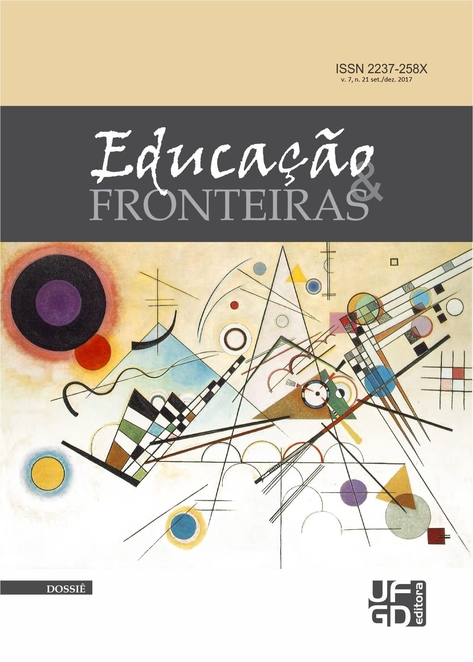Conceptual maps: a possibility for the study of atomic models in Chemical lessons
DOI:
https://doi.org/10.30612/eduf.v7i21.8054Keywords:
Writing. Concept maps. Basic Education. Chemistry.Abstract
The study of atomic models in chemistry lessons is fundamental for the understanding of more complex phenomena. However, as can be seen in the field research, students tend to memorize concepts, which makes it difficult to relate to other knowledge. The purpose of this research is to investigate the potential and intertextual relations established from the study of atomic models in a first-year high school class in a public school in the city of Dourados-MS. From a sequence of classes involving experimentation, reading of a text of scientific divulgation and textual production, it was possible to rethink the practices that are commonly performed. The focus of the analysis was on the conceptual map produced at the end of the last class, perceiving the established intertextual relations and the potentialities of these activities. The results showed that, in general, the students understood the dynamics of the conceptual maps and managed to organize the content of atomic models from this tool, allowing different intertextual relations. In addition, it was possible to evaluate students beyond the tests commonly performed in the school environment.Downloads
References
AZEVEDO, M.C.P.S. Ensino por investigação: problematizando as atividades em sala de aula. In: CARVALHO, A.M.P. Ensino de ciências – unindo a pesquisa e a prática. São Paulo: Pioneira Thomson Learning, p. 19-33, 2004.
CASSIANI, S; ALMEIDA, M. J. P. M. Escrita no ensino de Ciências: autores do ensino fundamental. Ciência & Educação. Bauru. v.11, n.3, p. 367-382, 2005.
FLÔR, C. C. Leitura e formação de leitores em aulas de química no ensino médio. Tese de Doutorado. PPGECT/UFSC. 2009.
MELO, M. R.; NETO, E. G. L. Dificuldades de Ensino e Aprendizagem dos Modelos Atômicos em Química. Química Nova na Escola, v. 35, n. 2, p. 112-122, 2013.
MOREIRA, M. A. Mapas conceituais como instrumentos para promover a diferenciação conceitual progressiva e a reconciliação integrativa. Ciência e Cultura, 32(4): 474-479, 1980.
ORLANDI, E. P. Análise de Discurso: princípios e procedimentos. 10.ed. Campinas, Pontes Editores, 2012.
SILVA, G. R; MACHADO, A. H; A. S; SILVEIRA, K. P. Modelos para o Átomo: Atividades com a Utilização de Recursos Multimídia. Modelos Para O Átomo, São Paulo-sp, v. 37, n. 2, p.106-111, 2015.
MEDEIROS, L. L; MEDEIROS, G. H; RAMALHO NETO, O. E. A construção dos modelos atômicos em uma abordagem histórica à luz da natureza do conhecimento científico: uma experiência do PIBID Química da UFRN. In: Anais do IX Encontro Nacional de Pesquisa em Educação em Ciências, Águas de Lindóia, 2013.









